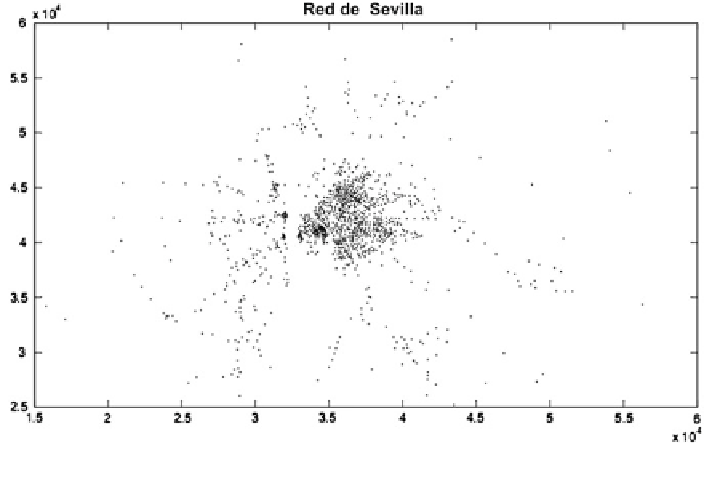Environmental Engineering Reference
In-Depth Information
Fig. 19
Nodes in the network of the Seville metropolitan area
city, and all the delivery vehicles start their routes there and have to return before
the end of the day. The fixed cost applied from the second vehicle onward was
assumed to be equal to 8,000 min.
We designed and solved 30 problems with different values of the number of
customers (40, 100 and 150), the size of the restricted zone (considering no
restricted zone or ZN equal to 2—the current scenario—5 and 9) and the length of
the time window restriction (TW = 2, 4 and 6). For each number of customers,
their location is always the same, varying only the size of the restricted zone and
the length of the time window.
Table
2
shows the results for the different problems. Each problem was solved
twice, with the A and B parameters of the GA equal to 2 and 6 respectively, but
using two different values (0.1 and 0.5) for the probability of mutation. For each
problem, we have represented the best value of the fitness, the total number of
hours in the delivery routes and the number of vehicles used. Represented in bold
are the best values obtained in each case.
This case study provides several interesting findings:
• The scenarios with the current size of the restricted zone (RZ = 2) show small
cost increments with respect to the base (no-window) scenario, but these
increments grow larger as the length of the time window (TW) increases.
• The scenarios with RZ = 5, corresponding to the size of the restricted zone that
is currently being considered in Seville, do show significant differences with
respect to the base scenario. As expected, these differences increase with the
length of the time window.

Search WWH ::

Custom Search